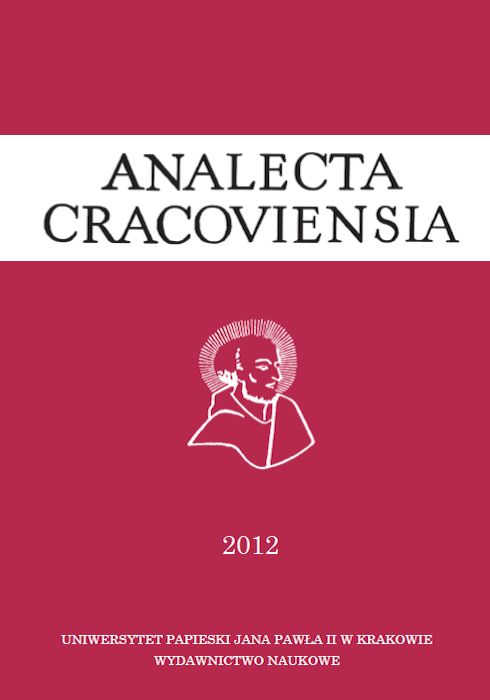Mariologiczna interpretacja perykopy Jezus w Nazarecie (Mt 13, 53–58)
DOI:
https://doi.org/10.15633/acr.13Słowa kluczowe:
Bible, Gospel, Mariology, Mt 13, 53–58, Matthew Apostle, theologyAbstrakt
In his article the author shows that the evangelical account of Mt 12, 46–50 as well as the pericope of Mt 13, 54–58 do not bring anything new as far as the Marian motifs are concerned just as it was previously presented in his research on Mt 1 and 2. Mt 13, 53–58 does not include any clear reference to the virginal conception. One can conclude that it is assumed and understood. In Mt 13, 53–58 it is the motherhood of Mary that is emphasized. She is the Mother of Jesus, the Messiah. Such a treatment of the theme is well grounded in the aforementioned editorial means of St. Matthew who wanted to stress the Christological motifs in his Gospel but also to present them as inseparably connected with and depended on the Mariological theme.
In his article the author asserts that in his account in Mt 13, 53–58 St. Matthew critically refers to the earlier account of St. Mark (which is his source) in which Mark presents Mary, the Mother of Jesus, the Messiah in an inconspicuous, perhaps even ineffective, way. Such a presentation is at least partially smoothed out and therefore the tone of Matthew’s presentation of Mary becomes more neutral and veritable. Thus the account of Mt 13, 53–58 acquires a new, positive undertone which has already been introduced at the beginning of the narrative in Mt 1–2.
Pobrania
Opublikowane
Numer
Dział
Licencja
Prawa autorskie (c) 2012 Mieczysław Mikołajczak

Praca jest udostępniana na licencji Creative Commons Attribution-NonCommercial-NoDerivatives 3.0 Unported License.
Obecnie autorzy publikujący w czasopiśmie udzielają jego wydawcy zgody o następującej treści:
- Autor zachowuje autorskie prawa majątkowe do utworu, a jednocześnie udziela wydawcy czasopisma zgody na jego pierwszą publikację w wersji drukowanej i wersji online na licencji Creative Commons Uznanie autorstwa 4.0 Międzynarodowe oraz zgody na wykonywanie opracowań, w tym przekładów.
- Autor ma możliwość udzielania zgody niewyłącznej na opublikowanie utworu w wersji, która ukazała się w czasopiśmie (np. zamieszczenia go w repozytorium instytucjonalnym lub opublikowania w książce), wraz z informacją o jego pierwszej publikacji w czasopiśmie.
- Autor może umieścić swój utwór online (np. w repozytorium instytucjonalnym lub na swojej stronie internetowej) jeszcze przed zgłoszeniem utworu do czasopisma.

